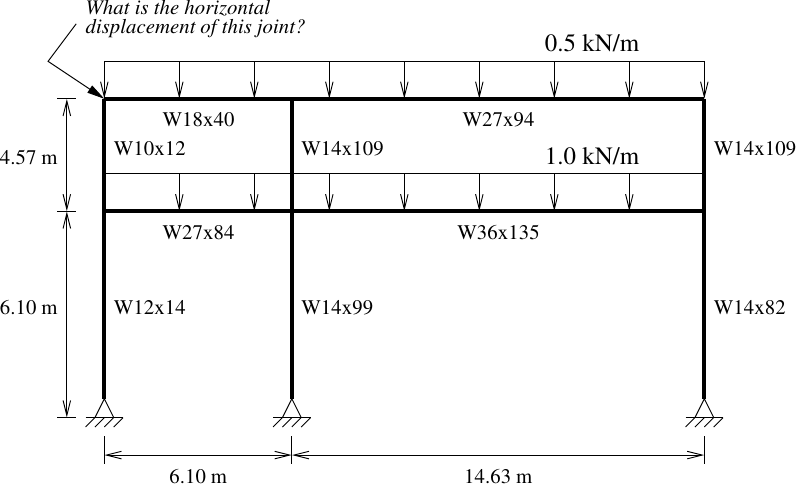OpenSees Cloud
OpenSees AMI
A New Challenge
Original Post - 04 May 2020 - Michael H. Scott
Show your support at Buy Me a Coffee.
The results from a previous modeling challenge were excellent with 100% of entries correct. But before we deep dive into the dark world of modeling nonlinear structural response, let’s do one more challenge with linear analysis.
The frame model shown below is UP50HA from a series of low-rise industrial structures whose reliability under gravity loading was quantified by Buonopane and Schafer (2006). The frame, now commonly known as the “Ziemian Frame”, was the centerpiece of Ron Ziemian’s Ph.D. dissertation and is a good example for modeling combined material and geometric nonlinearity. Before going to nonlinear response, let’s examine the linear response.

All joints are rigid and infinitesimal and the supports are pin boundary conditions. All members are steel with E=200,000 MPa and are oriented for strong axis bending. Due to its lack of symmetry, the frame will displace horizontally under the vertical loads shown.
The distributed loads on the girders are low, about 30 kN total, keeping the frame response within the linear-elastic, small displacement range. So, there’s no need to use a corotational mesh, as described in the paper, at least not yet.
What is the horizontal displacement (units=mm) of the joint indicated in the figure?
E-mail me your answer. You don’t have to use OpenSees–use whatever software you would like. Let me know if you have any questions.
I look forward to your responses. I will share anonymized results in another post. Future challenges will focus on nonlinear structural response of this model and the strongback model from the previous challenge.
Update (May 5, 2020): Due to the low magnitude of the distributed loads, including self-weight
of the frame members will make a significant difference in the computed response.
RESULTS